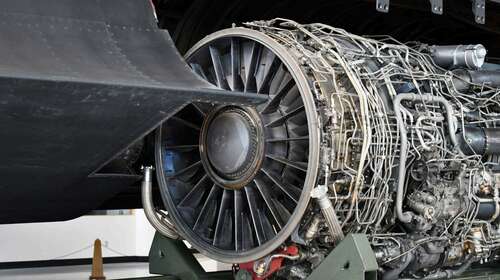
Though it would seem counter-intuitive, innovations with the J58 engine gave the Blackbird the best “gas mileage” during Mach 3+ cruise speeds. The need to slow down to subsonic speeds to refuel at lower altitudes caused a cooling effect that caused the aircraft’s skin panels, including those covering the fuel tanks, to shrink. This contraction would lead to fuel being leaked from the tanks, forming a memorable vapor trail behind the aircraft.
In total, each Pratt & Whitney J58 Turbojet engine weighed in at 8,690 pounds and was a massive 6.8 feet wide and 20 feet long. Capable of reaching up to 30,000 pounds of thrust per engine, the innovations made with the engine would go on to inspire future designs like the Pratt & Whitney TF30 Turbofan, which powers General Dynamics F-111, the F-14A Tomcat, and Corsair II, among other aircraft.
The final flight of the SR-71 Blackbird carrying a J58 would occur on March 6, 1990, with a record-setting flight. USAF pilots Ed Yeildling and Joseph Vida flew from Los Angeles, California, to Washington, D.C., in only 1 hour and four minutes, averaging a speed of 2,124 miles per hour. This final record-setting trip would mark the end of the SR-71’s active service after 22 long years.

